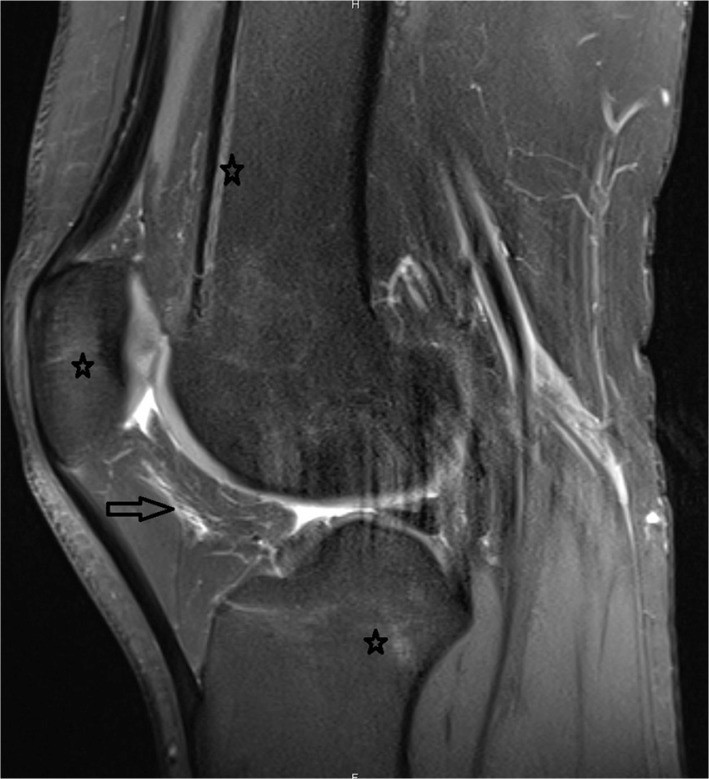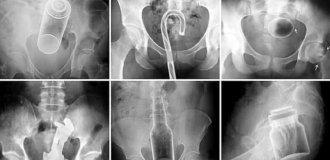Take care of your knees: why Kangoo Jumps sneakers are dangerous (6 photos + 1 video)
Training with Kangoo Jumps is rapidly gaining popularity, but how safe are they? Since the sport is relatively new, doctors until it was possible to assess the long-term health effects, however, the conclusions that they have already managed to draw are alarming - according to results of an MRI study published in the Japanese Medical magazine, almost 90% of athletes already have anomalies of the knee joints. 
If you are an adherent of a healthy lifestyle, are fond of fitness, well yes, or just recently passed by a gym with large windows, then must have seen these wonderful sneakers that allow you to ride like kangaroo - hence the name. Training with Kangoo Jumps really look provocatively, unusually and cheerfully, but skeptics will be wary - how safe for the knees is a sport that involves such number of jumps?
The authors of a study published in 2020 answer international journal Magnetic Resonance in Medical Sciences (Magnetic resonance in the medical sciences). The authors emphasize several times that to identify long-term health effects are needed further observations, but some conclusions can be drawn already now - and they are not very comforting. 
Even in their introduction, the researchers note that shoes, used in kangaroo jumping, was originally developed for reducing the load on the joints of runners, since when jogging their the balanced protection system reduces the impact force on the ground by up to 80%. But intense running or jumping in Kangoo Jumps, on the contrary, can lead to pain and injuries of the musculoskeletal system - but it is dancing and intense fitness training that are most popular now among kanga jumpers. 
The researchers examined 18 athletes involved in kangaroo jumping, and took 36 MRI images using a 3-tesla MRI - one shot for each knee. All study participants there were no symptoms associated with the knees; also for Athletes must have participated in the study for at least six months do kangaroo jumping at least three times a week for an hour a day.
The aim of the researchers was to compare the results with similar pictures of the control group, which consisted of 20 volunteers of the same age, sex and weight, but not involved in active sports on on a regular basis. Two orthopedists and one radiologist independently of each other friend rated all images for the presence or absence of any anomalies. 
In 32 (88.9%) out of 36 jumper tribes, one or several anomalies - in particular, edema was the most common pathology bone marrow, which MRI revealed in 32 knee joints (88.9%). Quadriceps tendinopathy was also common (80.6%), patellar tendinopathy (63.9%), calf tendinopathy (63.9%), edema of infrapatellar adipose tissue (75%), edema suprapatellar adipose tissue (63.9%), meniscus signal change (72.2%) and cartilage damage in the patellofemoral joint (72.2%).
Example: X-ray of the knee of a 27-year-old woman without symptoms, doing kangaroo jumping. The proximal asterisk shows longitudinal bone marrow edema (BME) of the thigh, middle asterisk indicates BME of the patella, distal asterisk showing BME of the tibiofemoral joint. The arrow shows the edema of the subpatellar adipose tissue. Tendinopathy of the patella and quadriceps manifests itself as signal change at the place of their attachment. 
The most important result that the researchers observed on MRI scans of jumpers' knees showed bone marrow edema (BME). Most traumatic BMEs of the knee correlate with the mechanism knee injury. The researchers also noted the influence of repetitive jumps on the anterior part of the femur and extensor tendon, in particularly on landing. As a reaction to this tension edema, microcracks and microtears develop - if the latter heal wrong, it leads to tendon degeneration. Among the athletes involved in other sports, such injuries are most often seen in basketball players.
Summing up, the researchers noted the need for long-term follow-up studies to better understand the significance of these results. However, we can already talk about the likelihood of acute knee injuries anddevelopment chronic joint problems such as osteoarthritis.
<img src=" https://cn22.nevsedoma.com.ua/p/26/2628/1608_files/3d0266394fb9d0cc9266fd12d493cc83.jpg"





















